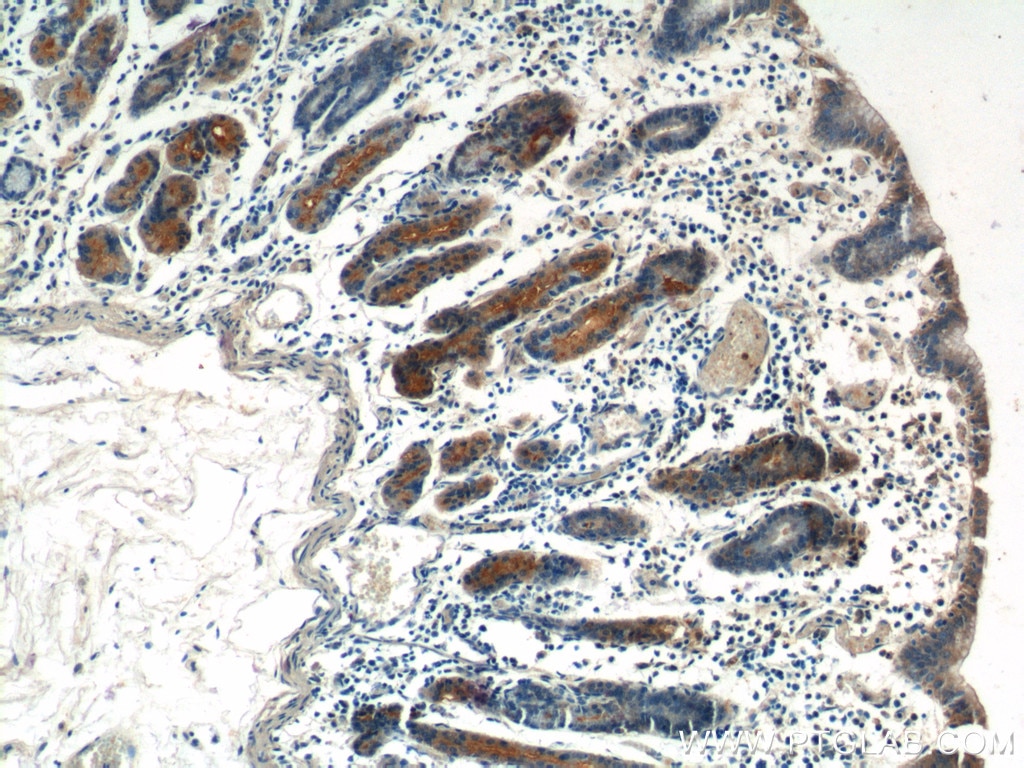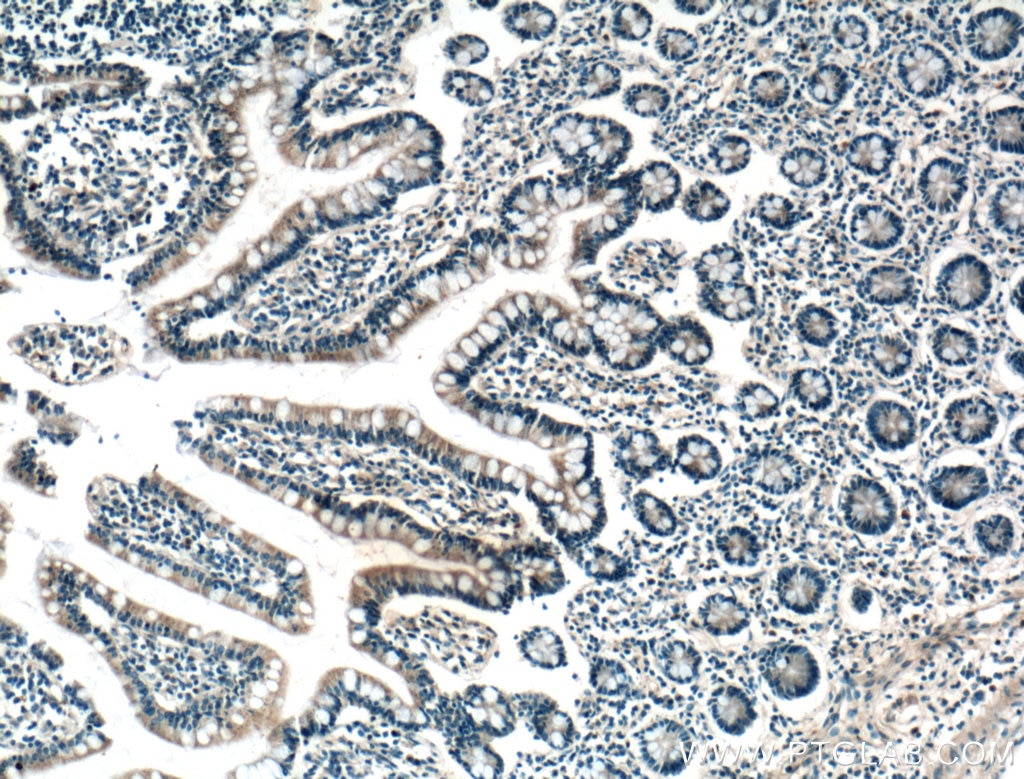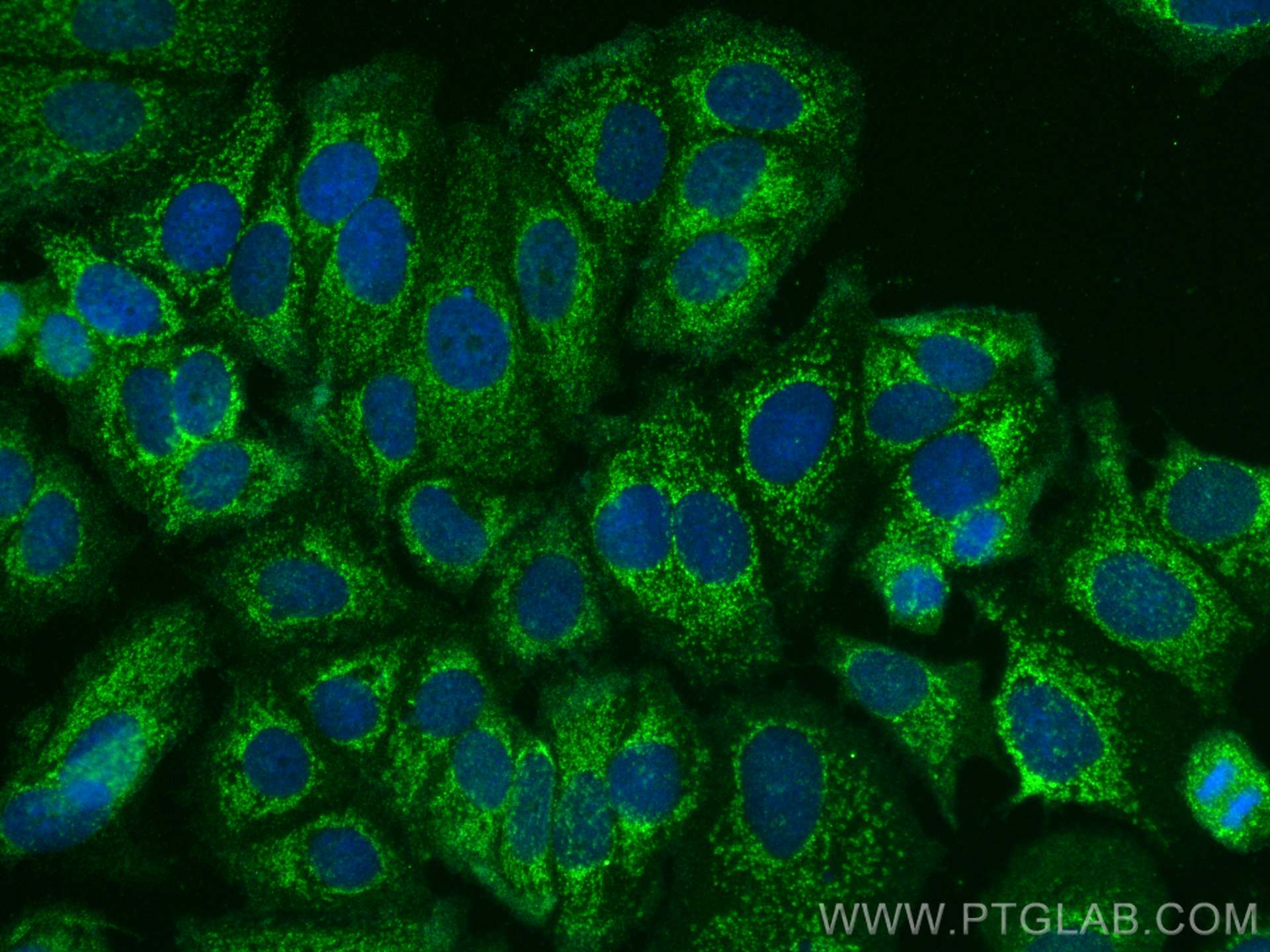Tested Applications
| Positive IHC detected in | human stomach tissue, human prostate cancer tissue, human colon cancer tissue, human small intestine tissue Note: suggested antigen retrieval with TE buffer pH 9.0; (*) Alternatively, antigen retrieval may be performed with citrate buffer pH 6.0 |
| Positive IF/ICC detected in | MCF-7 cells |
Recommended dilution
| Application | Dilution |
|---|---|
| Immunohistochemistry (IHC) | IHC : 1:50-1:500 |
| Immunofluorescence (IF)/ICC | IF/ICC : 1:50-1:500 |
| It is recommended that this reagent should be titrated in each testing system to obtain optimal results. | |
| Sample-dependent, Check data in validation data gallery. | |
Product Information
26554-1-AP targets FGF9 in IHC, IF/ICC, ELISA applications and shows reactivity with human samples.
| Tested Reactivity | human |
| Host / Isotype | Rabbit / IgG |
| Class | Polyclonal |
| Type | Antibody |
| Immunogen |
CatNo: Ag24244 Product name: Recombinant human FGF9 protein Source: e coli.-derived, PGEX-4T Tag: GST Domain: 1-55 aa of BC069692 Sequence: MAPLGEVGNYFGVQDAVPFGNVPVLPVDSPVLLSDHLGQSEAGGLPRGPAVTDLD Predict reactive species |
| Full Name | fibroblast growth factor 9 (glia-activating factor) |
| Calculated Molecular Weight | 208 aa, 23 kDa |
| GenBank Accession Number | BC069692 |
| Gene Symbol | FGF9 |
| Gene ID (NCBI) | 2254 |
| RRID | AB_2880550 |
| Conjugate | Unconjugated |
| Form | Liquid |
| Purification Method | Antigen affinity purification |
| UNIPROT ID | P31371 |
| Storage Buffer | PBS with 0.02% sodium azide and 50% glycerol, pH 7.3. |
| Storage Conditions | Store at -20°C. Stable for one year after shipment. Aliquoting is unnecessary for -20oC storage. 20ul sizes contain 0.1% BSA. |
Background Information
Fibroblast growth factor 9 (FGF9) is a critically important and elegantly regulated growth factor that was first identified during a screen for factors acting on cells of the central nervous system (CNS). Over the subsequent two decades of research, FGF9 has been revealed to play a significant role in various biological processes. A key feature of its control is reciprocal compartmentalization, particularly during development, with the epithelium serving as a dominant source and mesenchyme as a prime target. This mesenchyme selectivity is achieved through the high affinity of FGF9 to the IIIc isoforms of FGFR1, 2, and 3. FGF9 is widely expressed in the embryo, including in the developing heart and lungs, and more selectively in adult tissues, such as the CNS and kidneys.
Protocols
| Product Specific Protocols | |
|---|---|
| IF protocol for FGF9 antibody 26554-1-AP | Download protocol |
| IHC protocol for FGF9 antibody 26554-1-AP | Download protocol |
| Standard Protocols | |
|---|---|
| Click here to view our Standard Protocols |




















